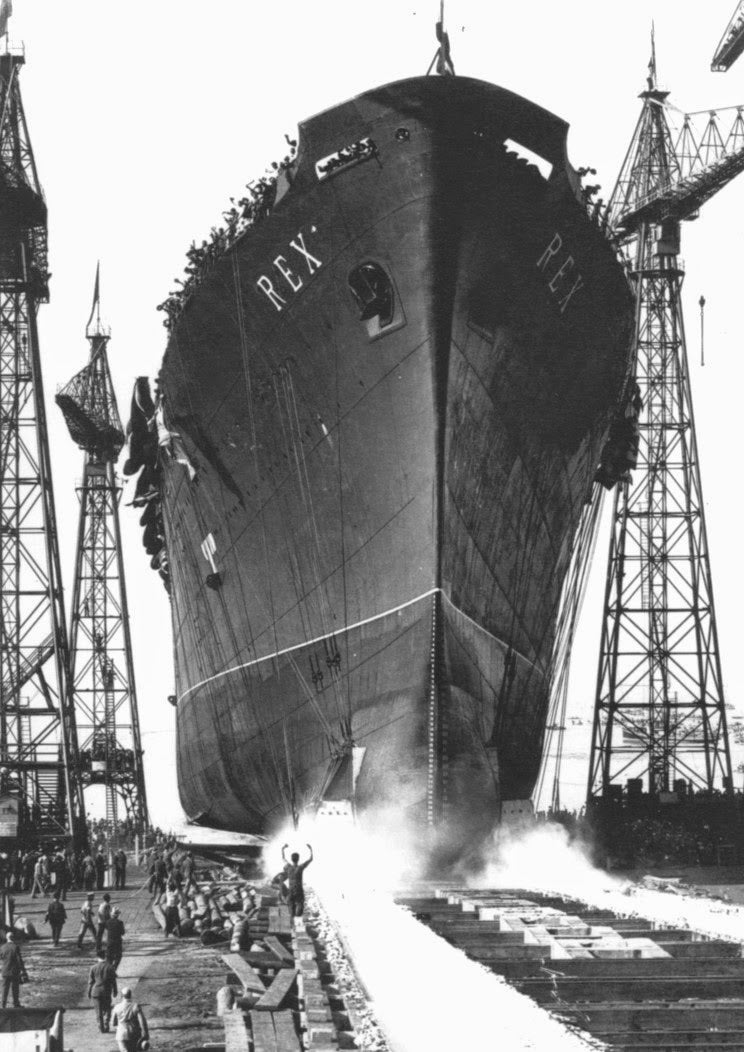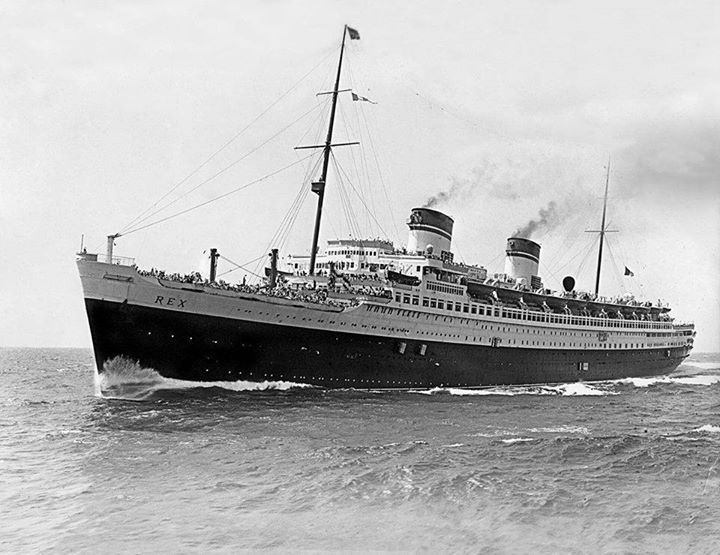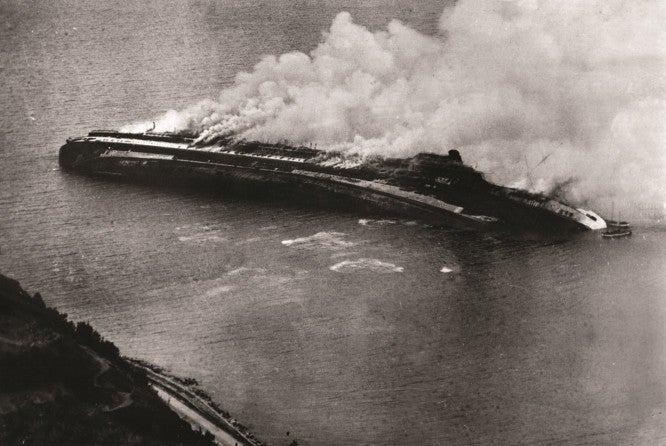 "ranwhenparked" (ranwhenparked)
"ranwhenparked" (ranwhenparked)
07/31/2020 at 21:42 • Filed to: None
 7
7
 6
6
 "ranwhenparked" (ranwhenparked)
"ranwhenparked" (ranwhenparked)
07/31/2020 at 21:42 • Filed to: None |  7 7
|  6 6 |

The new SS Rex was christened and launched by HM Queen Elena of Italy before a crowd of 100,000 spectators at Ansaldo Shipyards in Genoa, marking the first major attempt by Italian shipping companies to directly compete with the British, French, Germans, and Dutch on the transatlantic run with a modern, high speed superli ner. Rex had originally been ordered by Navigazione Generale Italiana (NGI), but, by the time it was completed, Benito Mussolini’s Fascist government had ordered it merged with i ts arch rival, Lloyd Sabaudo, in order to create the Italian Line, as the sole Italian flag carrier on the Atlantic, and Rex ended up paired with Lloyd Sabaudo’s Conte di Savoia , originally planned as a direct competitor.

After fitting out, Rex entered service in 1932, and featured a number of innovations - first ship with air conditioning, one of the first with a bulbous bow for improved fuel efficiency, and the ability for motorists to drive their cars directly on board into the cargo hold, via a ramp, rather than loading them via pallet and cargo crane, and broadcast the first live radio transmissions to Europe and North America from the middle of the Atlantic in 1933. In August 1933, Rex would set the transatlantic speed record at 4 days, 13 hour, 58 minutes at an average speed of 28.9 knots. Peroni brewery would name their Nastro Azzurro pale lager in honor of that achievement, the Blue Ribband being the traditional nickname for the transatlantic speed record, and Nastro Azzurro being simply the Italian translation of that .
On May 12, 1938, the US Army buzzed Rex at sea with a couple of B-17 Flying Fortresses, using the liner to practice targeting ships at sea, resulting in a diplomatic protest from the Italian government.

Rex was taken out of service in 1940, and with little need for a large troop transport, was laid up for safekeeping, until 1943, when she was seized by German forces in Italy, and looted of artwork, furnishings, and fixtures, and also stripped for parts between 1943-1944, when she was hit by British and Commonwealth bombers while anchored off the coast of Izola , Slovenia; burned out and partially sank. After the war, the area became part of Yugoslavia, and the wreckage was gradually dismantled for scrap between 1947-1957, with a portion of the hull’s double bottom and some boilers still in place on the seabed today.
 OPPOsaurus WRX
> ranwhenparked
OPPOsaurus WRX
> ranwhenparked
07/31/2020 at 22:45 |
|
so in typical Ita lia n fashion , it ended in a ball of flames.
 ranwhenparked
> OPPOsaurus WRX
ranwhenparked
> OPPOsaurus WRX
07/31/2020 at 22:54 |
|
Yup, seemed to happen to quite a few of their ships around the same time
 Exage03040 @ opposite-lock.com
> ranwhenparked
Exage03040 @ opposite-lock.com
> ranwhenparked
07/31/2020 at 23:48 |
|
Woah, 29kts would require some serious steam.
 ranwhenparked
> Exage03040 @ opposite-lock.com
ranwhenparked
> Exage03040 @ opposite-lock.com
07/31/2020 at 23:54 |
|
120,000 hp
 Turbineguy: Nom de Zoom
> Exage03040 @ opposite-lock.com
Turbineguy: Nom de Zoom
> Exage03040 @ opposite-lock.com
08/03/2020 at 17:02 |
|
And 35kts even more. The SS United States.
 Exage03040 @ opposite-lock.com
> Turbineguy: Nom de Zoom
Exage03040 @ opposite-lock.com
> Turbineguy: Nom de Zoom
08/03/2020 at 17:16 |
|
Yeah, I had a quick look through the wiki at liners after.
That sucker was at 24 0,000shp, nearly 3X the power of the Oasis Class with ABB Azi pods.
Imagining a world without the invention of aircraft. Where would we be now. A million horsepower for crossings?